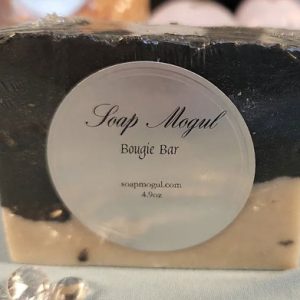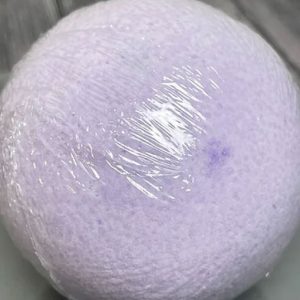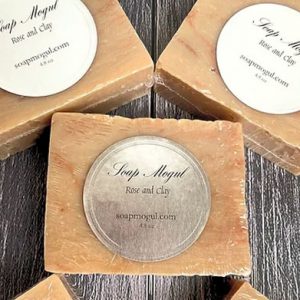Description
Product Ingredients
(Vegan)
Saponified Oils (Olive Oil, Organic Sustainable Palm Oil, Organic Coconut Oil, Organic Shea Butter), Water, Sodium Hydroxide.
RETURN & REFUND POLICY
Returns & exchange
100 percent money-back guarantee.
If you’re not happy with our soap, we’re not happy.
SHIPPING INFO
Orders ship within 2 to 3 days of receipt. All orders ship by 4 p.m. from Waconia, MN. Orders usually arrive within 3 to 10 days of shipping.
United States Tattoo History
United States Tattoo History
A tattoo is a design which is permanently carved in the skin with the help of needles and ink. The word came from the Tahitian term “tatua” which means “to mark.” This form of art has been used by people of all cultures & countries, for centuries. Even in ancient times decorating the skin with beautiful tattoos was a popular practice, but in the United States, tattoo have recently gained social acceptance.
History Of Tattoos
Different forms of tattoo art have been practiced by many different cultures of the world, over the centuries. It has been found that Egyptians started using tattoos as early as 4000 B.C. Japanese began the art of tattooing in around 500 B.C. They used this form of art for cosmetic and religious purposes. They even used tattoos as a brand known to the criminals as part of their punishment. The Japanese used to make tattoos by puncturing the skin with fine metal needles & creating multicolor designs. Eskimos tribes invented new technique of tattooing of using bone needles.
Origin Of Tattoos
In the 1769, Captain James Cook traveled to Tahitia and observed skin marking customs in the natives. In his book, The Voyage in H.M. Bark Endeavor, Cook described the term ‘tatua’ which “leaves an indelible mark on the skin.” In the United States of America, tattoo shops were considered dangerous and were socially unacceptable. But this mindset is now changed & tattoos are becoming increasingly popular in United States among the people of every age. A German immigrant, Martin Hilderbrandt, got the honor of the first professional tattooist in United States.
South American Tattoos
Mummies from the 11th century have been found in Peru, with tattoos, by archaeologists. The excavations show that tattooing went through a lot of development and evolvement throughout the period before the onset of Inca period. It also shows that tattoos were common among both the genders. It has also been estimated that at least 30 percent of the tribal population was tattooed.
Gran Chaco, south of Amazon River, is a vast land situated in the heart of South America. This land covers parts of Argentina, Bolivia and Paraguay. It is not a very fit land for human settlement. Irrespective of this several groups of indigenous people live on this land. The tattooing process in this land always had mysticism to it. Women are more heavily tattooed in these tribes than men. In these cultures, during primitive times, it was famous for a young girl of five to seven years of age to be marked on the forehead and with many more years adding to her life, more marks were put on her forehead. This was put in a design of half moon or small circles or crosses or lines on the face, etc. At the onset of puberty or maturity, girls had their faces tattooed completely which meant that these girls were ready to get married. These tattoos were done mostly by old women in the clan. The first step was to mark an outline on the face of the client with a piece of charcoal and then puncture the skin of the face with thorns from cactus. Then the dye made out of saliva and soot was stuffed inside the wound. After sometime, the skin used to get swollen up and blood used to flow down from these tattoo wounds. While the wound heals itself, the young female was told to hide in her father’s house and abstain herself from eating fish, meat, etc. and was only allowed to feed on fruits. She was also advised to keep her tattoo wound wrapped in a cloth.
Tattooing In Modern United States
During initial times tattoos were made by hands, but in 1891 the first electric tattoo machine was issued to the Irish tattooist Samuel O’Reilly at the United States Patent Office. He began his business as a “tattoo parlor” in New York City. This was the first tattoo studio in the United States. Soon the tattoo parlors became the trend in the United States of America. Then, during the First and Second World Wars, military of United States adopted tattooing as a means of protection and remembrance. Conventions, magazines, and other kinds of exposure, made tattooing popular in the country.
Popularity Of Tattoos
People, now, have started appreciating the artistic merit of tattooing. Tattoos are frequently used to express personal and religious belief. It is now seen as a part of fashion and young generation is simply crazy about tattooing. The combination of technology, historical awareness and artistic ability has taken the art of tattooing to heights never imagined before. It has been seen that hand tattooing is also making a comeback in the United States again. Tattoo art is growing so fast today that there is hardly any country untouched by this form of art.
PREPARING FOR A TATTOO: Dos and Don’ts
There are a few things you can do in preparation for your new tattoo to make sure you get the most out of your experience and leave your session with a tattoo you’ll love for a long time!
Choose the right studio
Do your research!
Look up studios around you to find one that fits your needs – is it conveniently located? Does it fit within your budget? Do they tattoo in the style you are looking for?
Not sure what style you want? Find some inspiration in The Many Styles of Tattooing
Other things to assess include the studio’s standards of hygiene, as well as the quality of materials they use.
Lokkiing to get inked in the twin Cities click here and talk to my friends at Crazy lady ink.
Drop in for a consultation
Meet your artist before getting inked.
You may not have your full tattoo design planned out, and that’s perfectly fine – artists love working with a client to create unique designs that tell their story.
A consultation lets you discuss and finalize your tattoo design. Together, you can come up with a design that truly represents you as opposed to something you simply found online.
Some artists also require that you pay an advance when booking your tattoo appointment, so it helps to settle details like price during your initial visit.
Trust your artist
You’ve discussed the design, now trust your artist to do their job.
Tattoo artists want to give you the best experience just as much as you want your perfect tattoo, so trust them to customize a tattoo design that represents you perfectly.
Choose quality
A good artist is someone that has worked on perfecting their craft for many years. Their skill means you get a quality tattoo. So choose an artist because they’re good, not because they’re cheap.
And DO NOT haggle! Good art is worth paying for – especially when the canvas is your body!
Eat healthy and stay hydrated
A tattoo will heal faster when your body is at its healthiest self. So keep yourself healthy and hydrated in the days leading up to your appointment – as well as after it.
Prep the tattoo spot
Keep the tattoo spot clean and well-moisturized. Healthy skin means faster healing as well as a better-looking tattoo!
TATTOO DAY: Getting Ready for Your Appointment
Your appointment day is finally here! And with it, the usual hits play – “Do I prep the tattoo spot? Should I shave? Can I do a shot to calm my nerves before I get inked? Can I get there early? WHAT DO I WEAR?!”
Pause the tunes – we’ve got some answers for you!
Hygiene
Come freshly showered!
Tattooing requires good hygiene, both from the artist and the customer. It’s difficult for an artist to spend such a long time working in close quarters with someone that has not maintained an appropriate level of hygiene, so be considerate!
Include deodorant and mouth freshener in your pre-ink routine if possible.
Also, assess the studio when you go in for a consultation. Be sure to check that the ink is of high quality and that the needles are freshly removed from their packaging before being used in your session.
Prep the tattoo spot
Clean and shave the tattoo spot, and don’t use any products on it before your appointment. Unhygienic practices can increase the risk of an infection, so you want to make sure the area is totally clean.
What to wear
Loose, comfortable clothing that you can move around in and that leaves the tattoo spot accessible is best!
It is preferable to come dressed in black – your clothes won’t get ruined during inking and your artist doesn’t have to worry about being the one who ruined them!
Getting to your appointment
Be on time! And if you’re going to be delayed, need to reschedule, or can’t make it be sure to inform your artist beforehand.
Always confirm the location and time of your appointment, and try not to bring too many friends along as this can be distracting for your artist.
If you prefer listening to your own music during your session, make sure to bring headphones!
Eat well and stay hydrated
Tattooing can sometimes result in your blood glucose level dropping a little. So eat well before your appointment and stay hydrated.
Bring a snack, such as chocolate or something sugary in case your glucose level drops during your tattoo session – which is quite likely for a very long session!
Make sure to also be well rested, since this keeps you relaxed, alert, and maximizes your tolerance to pain.
Come sober
Avoid consuming alcohol or other substances for at least 48 hours before your appointment. That’s right, put that shot down!
Besides it being quite difficult to tattoo someone who is not sober, alcohol, drugs, and certain medication can thin your blood and make the tattooing process much harder and the healing process much longer.
Certain drugs also make it difficult for the ink to enter your skin – which can lead to a botched up tattoo that will fade or ink that just won’t stick, no matter how hard the tattoo artist pokes!
So stay sober for your appointment. Also, avoid consuming caffeine for up to 48 hours prior to your appointment if you can. A good tattoo is worth it, trust us!
If you deal with anxiety, you could try some calming strategies to help you through the nerves. If that doesn’t work, discuss it with your artist during your consultation – they’ll have a whole list of strategies to help you out!
Stay still
Remain as still as you can during your session. It might hurt, but the result is going to be worth it, and it makes your session go much smoother and end faster!
If you need a break, let your artist know before you start moving around. And speaking of breaks…
Taking breaks
Take breaks if you need them, but try not to take too many as this interrupts the inking process. Try and visit the bathroom or take a smoke or drink break BEFORE your session.
And if you absolutely MUST take these breaks during your session, make sure you don’t let anything touch your unfinished tattoo and wash your hands thoroughly to avoid getting any bacteria on the open wound.
Duration
A whole appointment, beginning with getting you prepped and settled in, tattoo pre- and post-care, and finalizing payment can take over an hour, so make sure you allow enough time for the whole process.
Do not rush your artist! Tattooing is a delicate process and rushing it will lead to lesser quality work – and will likely be more painful too.
Tip your tattoo artist!
If you enjoyed your experience and love your new ink, be sure to tip your artist!
TATTOO AFTERCARE: Caring for a Healing Tattoo
Congratulations on being #freshlyinked!
The first 4 weeks after getting your tattoo are very important. A new tattoo is like a raw, open wound. It requires just as much care in order to prevent any infection while your tattoo is healing.
Proper aftercare will ensure that your tattoo goes on to look the best it can look, and stay that way for a long time!
Have you shared your new tattoo with the world yet? Be sure to tag us! Find us on Facebook, Instagram, and Twitter. We’d love to hear from you!
What exactly is ‘aftercare’?
Tattoo aftercare usually involves certain standard procedures including cleansing and moisturizing and refraining from activities like exercising and swimming (details below!).
Some artists might have a few procedures specific to your tattoo, such as dry healing for larger tattoos, which involves keeping the tattoo totally dry except for when you wash it.
Be sure to check in with your artist and ask for their recommended aftercare steps before you leave the studio!
* * *
What to expect
New tattoos are raw, open wounds and will hurt a bit, about as much as a mild to moderate skin burn.
- The tattoo area will be sore (like the muscles underneath have just been exercised),
- you will experience redness,
- you might experience some of bruising (skin will be raised and bumpy), and
- you might feel a bit run down or tired like you’re experiencing a mild fever.
-
All these symptoms will gradually subside over the first week and will be totally gone after 2-4 weeks.








Reviews
There are no reviews yet.